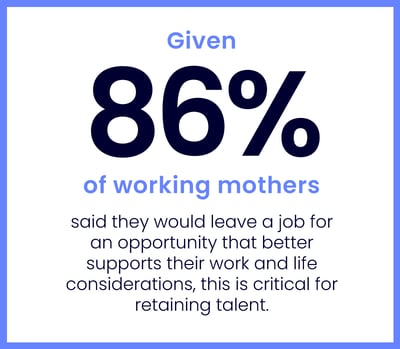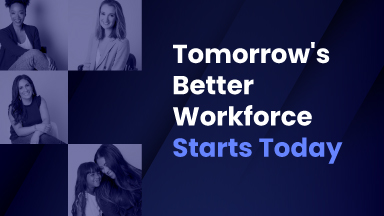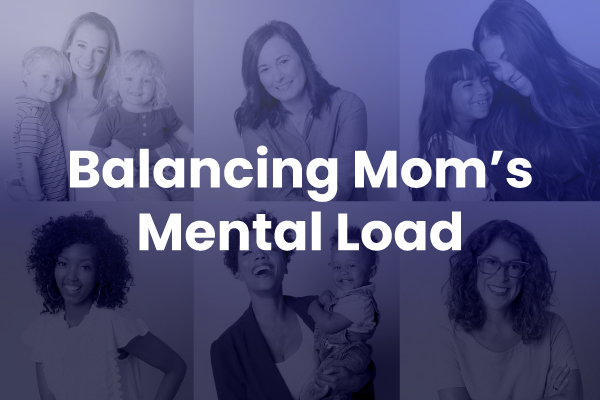For a few months in early 2020, data showed that women outnumbered men in the U.S. workforce, a stat that took generations to achieve. Then the pandemic hit and all the work that had been done to progress women at work -- in equity, pay and opportunity -- quickly began to unravel. Women, especially women of color, have been disproportionately impacted by the pandemic, driving them out of the workforce in record numbers.
While the Bureau of Labor Statistics unemployment data doesn’t look great for Americans overall, the situation for women of color is particularly concerning. The jobless rate for Black women is one-fourth higher than the national average of all Americans in that same age group. For Latinx women, the rate is just under 50 percent higher, according to NBC News.
The reasons for this are not surprising. High job loss in “contact-intensive” industries such as leisure and hospitality, education and health services, and retail have accounted for a disproportionate number of jobs lost. According to Catalyst.org, that, coupled with the closing of schools and daycare centers, put the childcare burden on families (mainly women), who made the difficult decision to leave the workforce altogether.
WerkLabs, the research and analytics division of The Mom Project, conducted a survey of moms of color during the pandemic and found the extent to which an organization offers flexibility and acknowledges the unique needs of its employees came in number one as the most impactful driver of their employee experience. The support offered to moms specifically came in second and leaderships’ effectiveness in communicating and taking action on policies that benefit them (i.e., BLM, parenting, mental health) was third.

With the pandemic still ongoing, schools still in varying degrees of opening and slow vaccinations rates happening, companies need to look immediately at how they can begin to reverse the impact the pandemic has had on working mothers.
Realize the impact women make on work
First and foremost, companies need to understand the significant impact women make on their success. Companies in the top quartile for gender diversity are 15% more likely to outperform the competition. Another study showed mothers are more productive than their child-free counterparts.
According to Harvard Business Review, women have shown to have more resilience (54.7 percentile) than men (49.3 percentile), meaning they can adapt to the changes happening in the workplace and respond quickly. Women also have excellent problem-solving skills and they’re incredibly reliable, driven and motivated.
What’s more, it’s also been shown that women in leadership positions are perceived just as — if not more — competent as their male counterparts. If something isn’t done to begin to reverse the impact of the pandemic on women in the workforce, companies risk losing future women leaders.
Clearly communicate expectations
When possible, offer employees as much certainty as possible to set them up for success. Be clear about job expectations and performance measurements. If there are changes around expectations or policies that will impact them in or outside of work, communicate them in a timely manner.
If there are initiatives that you believe will positively impact working parents, such as job sharing, flexible workdays, sick leave policy changes or mental health programs being put in place to help support them, let them know how to access and take advantage of them.
!["I really want to talk to a human about this... I think that is the key piece that's missing... it's engaging and having these conversations [is] important."](https://work.themomproject.com/hs-fs/hubfs/TMP_Article_DTC-2-Interior2.jpg?width=600&name=TMP_Article_DTC-2-Interior2.jpg)
Offer flexibility and support
Flexibility is becoming a must-have instead of a “nice to have” for companies looking to attract top talent. While more and more companies will offer remote work post-pandemic, more can be done to support working moms.
Implementing parent-friendly scheduling policies that offer flexible hours can go a long way towards allowing parents to work when it’s convenient for them. Studies have shown that a compressed workweek or a shorter workday can also reduce burnout.
Companies can also offer financial support for working parents such as daycare stipends or other daycare benefits, extended paid leave, provide remote learning supplies and assistance in sourcing educators, distance learning tutors and childcare professionals.

The underlying stress and anxiety the pandemic has caused also must be addressed and support needs to show up in real policy changes -- at least in the short term. According to a recent report by McKinsey, “less than a third of companies have adjusted their performance review criteria to account for the challenges created by the pandemic and only about half have updated employees on their plans for performance reviews or their productivity expectations during COVID-19.”
What’s more, the WerkLabs survey found moms of color were two times more likely to report feeling as if their employers were testing them to determine their persistence during the pandemic. Twenty percent more moms of color reported their employers assume working from home means they have more hours to work.

Employees can’t be expected to perform at the same level as pre-pandemic days when they are still being stretched to the breaking point. If companies don’t address these policies, they risk additional employee burnout, which will negatively impact retention. For instance, Facebook made several changes to support employees, including removing all performance ratings to address the anxiety, uncertainty and conditions we were all dealing with.
Partner with companies who can provide diverse candidates
Find partners who understand the importance of supporting and employing working mothers and back that commitment up with investment and innovation.
The Mom Project, for instance, is partnering with Accenture to help deliver on their commitment to hiring 150 mothers. These newly created positions will be in technology, strategy and consulting, and will be curated and vetted via our Diverse Talent Cloud.
Our Diverse Talent Cloud is an AI-enabled platform that improves match reliability, reduces bias and delivers diverse talent faster, so companies can get connected with quality talent and working parents can find meaningful work whether they’ve been out of the workforce for 3 months or 3 years.
Address inclusion
Diversity and inclusion are two different things. Understanding the differences will help ensure you have success throughout your organization.
Inclusion means bringing your authentic self to work and in all other aspects of your life. It means creating a work environment where all individuals are treated fairly and respectfully and feel included by the company they work for.
LinkedIn’s Global Recruiting Trends 2018 report showed 51% of organizations said that “If diversity is being invited to the party, inclusion is being asked to dance and belonging is the feeling of psychological safety which allows employees to be their best selves at work.”
Talent of all races, colors, religious beliefs, sexual orientation and backgrounds need an inclusive environment to feel a part of and contribute. Make sure you hear from all voices when establishing policies, procedures, job descriptions and training opportunities to ensure you are creating an environment that sets everyone up for success.
If you want to start implementing changes in your working environment to support working mothers -- especially women of color -- and don’t know where to start, just ask. Not every working mom needs the same level of support or needs support in different areas depending on their unique circumstances. Ask for feedback and recommendations on ways you can do this successfully.
Tomorrow’s workforce is fighting for more diversity and authenticity in the workplace and they’re being selective about which company’s culture provides it. If you want to be an employer of choice, you need to take steps to improve your workplace for working mothers now.
This is the second in the series "Diverse Talent Cloud - The Future of Work" to help shed light on their importance, ways to integrate them into your existing talent strategies, implementation best practices and how to best support these initiatives organizationally.
We look forward to sharing more with you soon. In the meantime, be sure to sign up for more information and to learn how we can help you unlock the power of moms:



